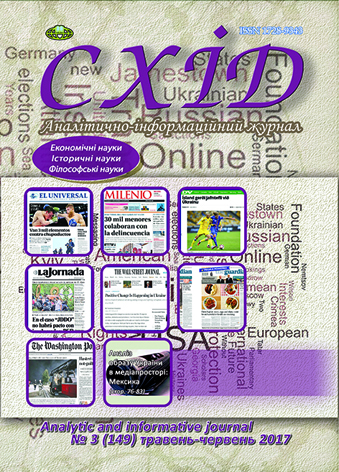'Kuroneko Banzai' and 'Nimbus Libere' as the examples of anti-American military propaganda
DOI:
https://doi.org/10.21847/1728-9343.2017.3(149).108345Keywords:
animation, France, Japan, propaganda, the United States of America, World War IIAbstract
The study analyzes two animated films - Japanese film Kuroneko Banzai released in 1933 and French film Nimbus Libere released in 1944 - as the examples of the anti-American military propaganda that uses famous American cartoon characters. Kuroneko Banzai tells the story of the inhabitants of one Pacific island who are attacked by vicious Mickey Mouse. The inhabitants are saved by the heroes of the Japanese tales (Momotaro, Urashima Taro, Kintaro, Issun-bshi etc.). The film is an example of a national military training which, in one hand, involves the images of Japanese fairy tales characters, that is, appeals to the Japanese national tradition hidden in the Japanese tales and Japanese national symbols (sakura), but, in other hand, it contrasts the Japanese fairy tales characters, which symbolize the Japanese national tradition and connection with ancestors and deities (Kami), with American cartoon character Mickey Mouse who stands as an enemy from the West. The portrayal of such popular character like Mickey Mouse as the enemy is actually aimed at demonization of Mickey Mouse and together with him the entire American culture to oppose it to own traditional Japanese culture portrayed by the fairy tales characters. Nimbus Libere tells the story of such American cartoon characters like Mickey Mouse, Donald Duck, Goofy, Popeye the Sailor and Felix The Cat who bomb France. The film attempts to demonize the Anglo-American allies landed in Normandy to make ordinary Frenchmen not to help the allies.
Downloads
References
Kolesnikov, A. (2010), Sake and sakura. The traditional Japanese symbol on military cups, аvailable at: http://www.slovoart.ru/node/66 (accessed 28.07.2014) (Rus).
Pocheptsov, G. G. (2002), Imageology. Moscow, Refl-book, Kiev, Vakler (Rus).
Rhodes, A. (2008), Propaganda: The Art of Persuasion World War II. An Allied and Axis Visual Record, 1933-1945. Moscow, Eksmo (Rus).
Abras, M.-A. (2003), Comment les enfants perçoivent-ils la mort à travers les médias?, Ethnologie française, №4, pр. 665-672. DOI: 10.3917/ethn.034.0665.
Fyne, R. (1994), The Hollywood Propaganda of World War II, Lanham, Scarecrow Press.
Raiti, G. C. (2007), The Disappearance of Disney Animated Propaganda: A Globalization Perspective. Animation, № 2, pp. 153-169. DOI: 10.1177/1746847707074703
Shale, R. (1982). Donald Duck joins up: the Walt Disney Studio during World War II. Ann Arbor, MI: UMI Research Press.
Shull M. S. & D. E. Wilt (2004). Doing Their Bit: Wartime American Animated Short Films, 1939-1945. McFarland.
Downloads
Published
How to Cite
Issue
Section
License
Copyright (c) 2017 Konstantin Rayhert

This work is licensed under a Creative Commons Attribution-NonCommercial-NoDerivatives 4.0 International License.
1. Authors bear responsibility for the accuracy of facts, quotations, numbers and names used.
2. Manuscripts are not sent back.
3. The publisher does not always agree with the authors' opinion.
4. The authors reserve the right to authorship of the work and pass the first publication right of this work to the journal under the terms of a Creative Commons Attribution-NonCommercial-NoDerivatives 4.0 International License. This license allows others to distribute (copy) the published work for non-commercial purposes, provided there is mandatory attribution to its authors and a link to the first publication in our journal.
5. The authors have the right to conclude separate supplement agreements that relate to non-exclusive work distribution in the form in which it has been published by the journal (for example, to upload the work to the online storage of the journal or publish it as part of a monograph), provided that the reference to the first publication of the work in this journal is included.

